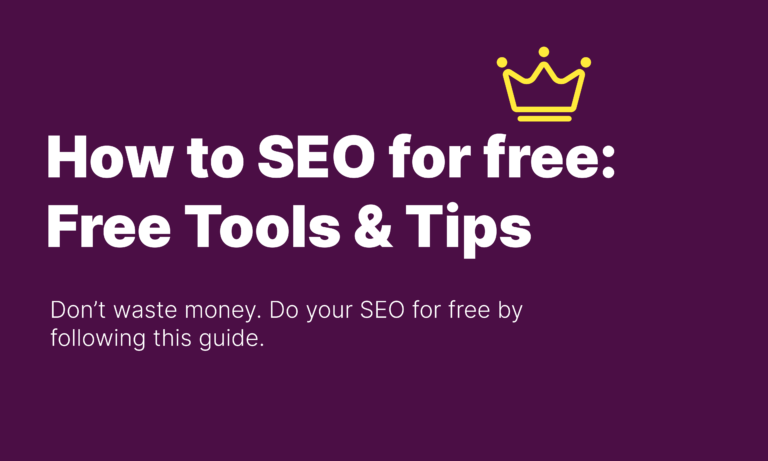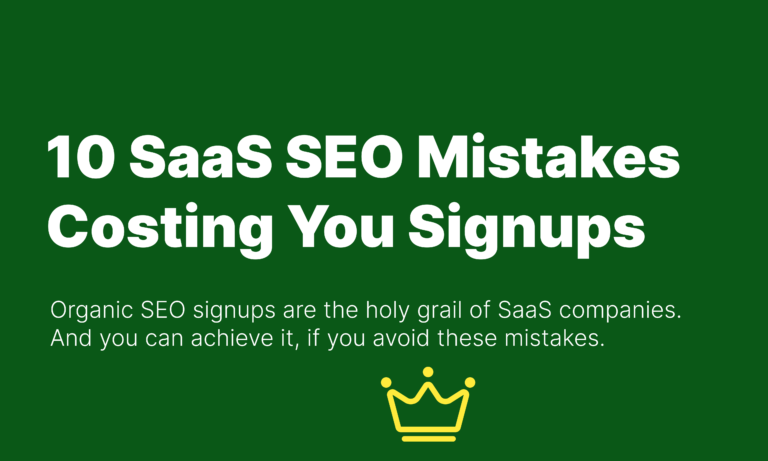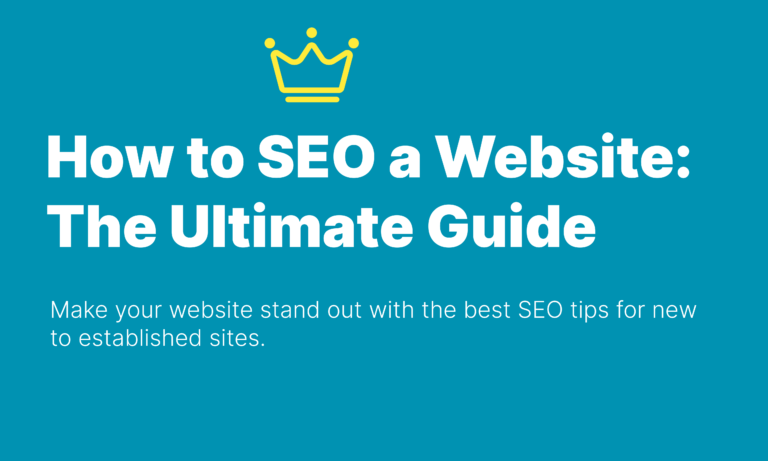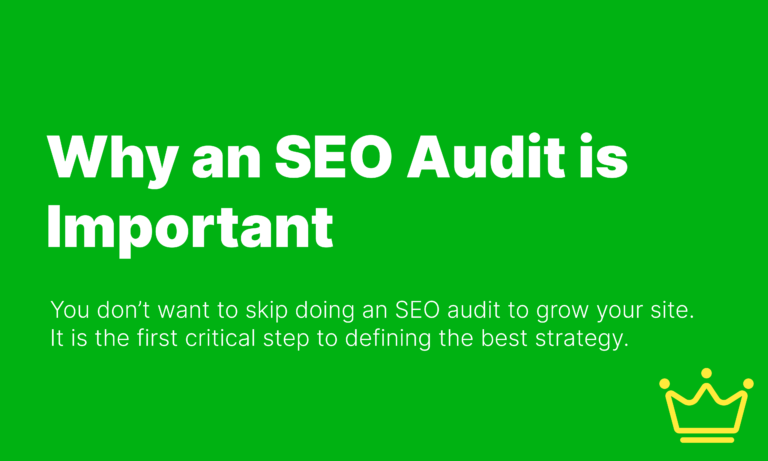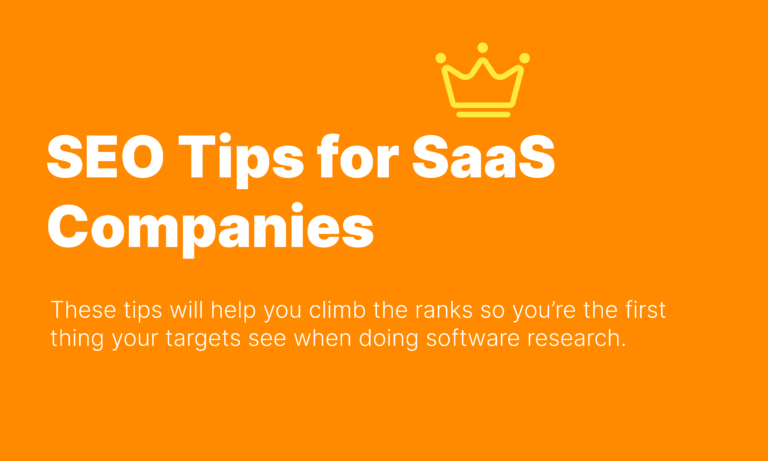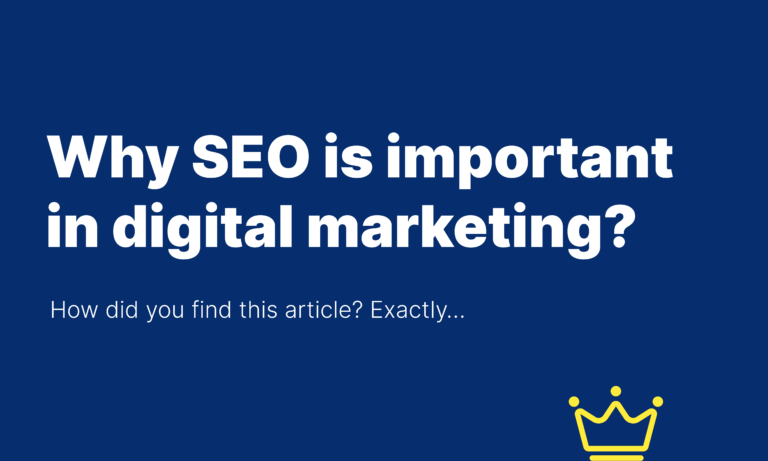SaaS SEO Checklist: 14 Must Do’s
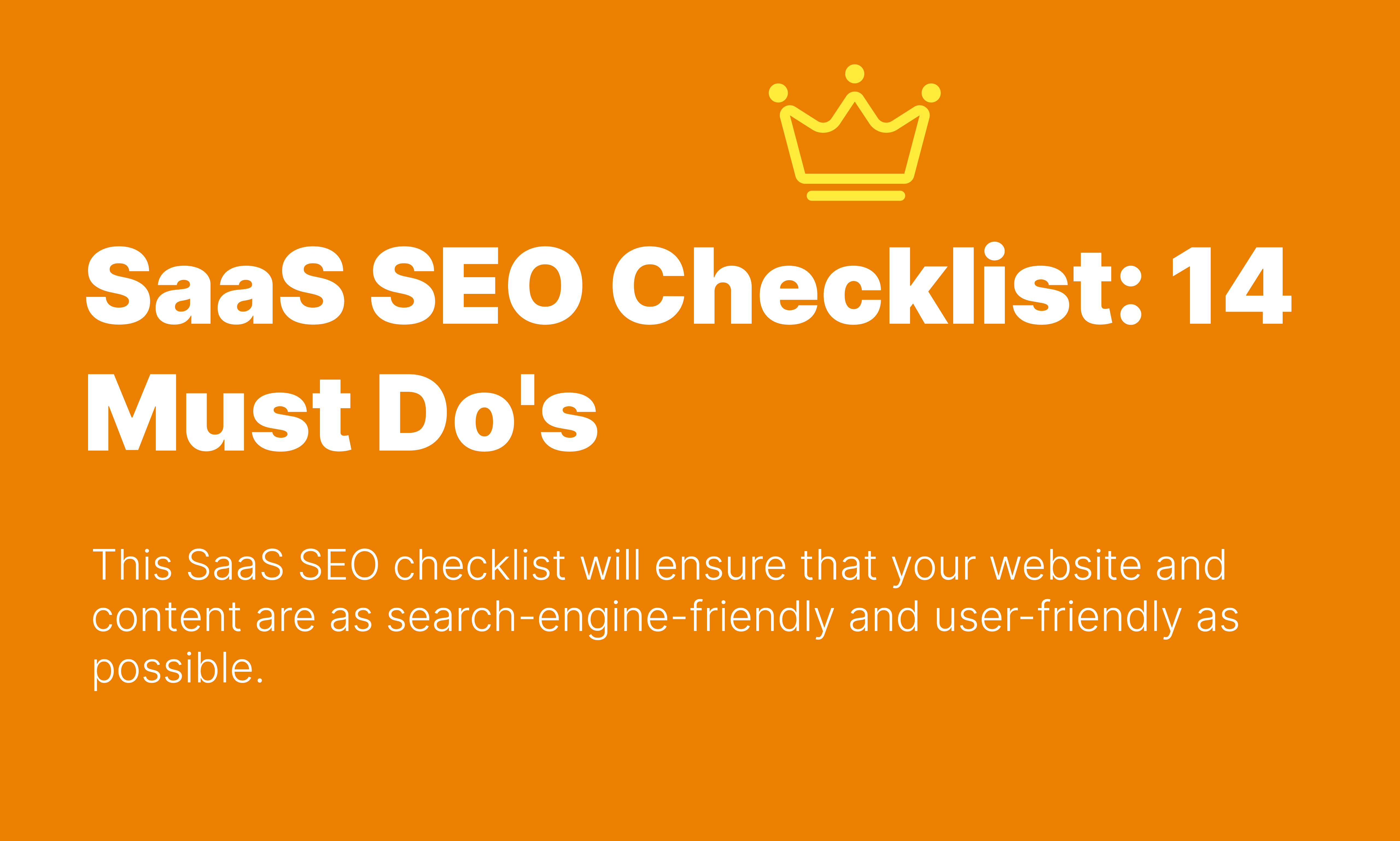
This SaaS SEO checklist will ensure that your website and content are as search-engine-friendly and user-friendly as possible.
The Ultimate SaaS SEO Checklist
- Upload a Site Map
- Optimize Page Speed
- Install an SSL
- Research Keywords
- Optimize Meta Tags and Titles
- Use the Right URL Structures
- Generate Quality Backlinks
- Consider The User Intent
- Answer User Queries Clearly and Fast
- Focus on High-Quality Content
- Have Keywords in Your Title
- Include Keywords in Headings
- Use Multimedia
- Add External and Internal Links
Why SaaS SEO Checklists are Important
SaaS SEO is all about small consistent steps. Each one plays an important role in making your website the best it can be for Google’s algorithm, but most importantly, the user.
A SaaS SEO checklist like the one here will guide you through optimizing your website for search engines. This ensures your SaaS product gets found by potential users. A checklist covers all SEO aspects, from keywords to link building. It helps you not miss any crucial steps in the SEO process.
Using a SaaS SEO checklist saves time and resources. It gives you a clear plan for optimizing your website. You can focus on tasks that have the most impact on your SEO.

We can do your content marketing
Uphill Content specializes in growing SaaS businesses, from early-stage to exit. Send us a message to learn how we can help.
Website SaaS SEO Checklist
We divided this SEO checklist for SaaS into 2, one focusing on your website and the other on your content.
1. Upload a Site Map
A site map is a guide for search engines. It lists all your website’s pages. This list helps search engines understand your site’s layout. Make sure to create a site map. Then, upload it. You can do this through Google Search Console. Alternatively, there are tools like Yoast’s WordPress plugin that do this automatically.
A site map improves how search engines see your site. It aids in faster indexing of your content. Without a site map, some pages might stay hidden. Ensure your site map is up to date. This helps search engines find new pages.
2. Optimize Page Speed
Page Speed Optimization is crucial for any website. Fast-loading pages rank higher in search results. They also keep users happy. To assess your site’s speed, use tools such as Google PageSpeed Insights. These tools provide insights on how to make your site faster.
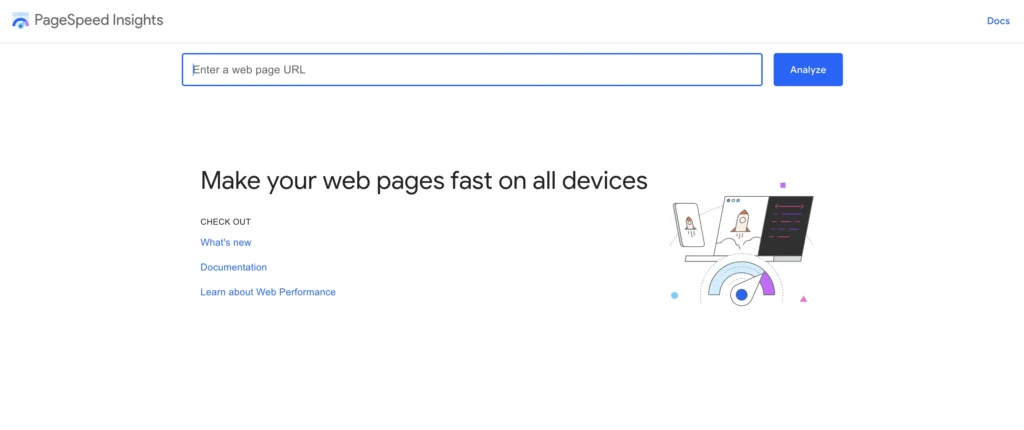
If your site is slow, take action to speed it up. One way is to compress images. Large images slow down page loading times. Another method is to reduce redirects. Each redirect delays the page load time. Implementing these changes can significantly improve speed.
Improving your site’s speed enhances user experience and SEO. Fast pages are more likely to retain visitors. They also signal to search engines that your site is well-optimized. This can lead to better search rankings. Focus on speed optimization to boost your site’s performance.
3. Install an SSL
Having an SSL certificate is key for website security. SSL encrypts data shared between users and your site. This encryption keeps user information safe. Ensure your website uses SSL. Look for the HTTPS prefix in your site’s URL. This indicates a secure connection.
Google ranks secure sites higher. Sites with SSL are marked as safe in browser address bars. This not only protects users but also improves trust. As a result, more users are likely to visit and stay on your site. Security thus plays a crucial role in SEO.
4. Research Keywords
Researching keywords is vital for any SaaS marketing strategy. Keywords are the terms and phrases that people type into search engines. To attract the right audience, you need to know which keywords they use. Tools such as Google Keyword Planner can help. These tools show you the keywords related to your product or service.
Once you have a list of potential keywords, select those most relevant to your SaaS. Consider the intent behind each keyword. Some keywords are better for attracting visitors who are ready to buy, while others are good for those still researching. Choose keywords that align with your content strategy. This ensures you attract the right traffic to your site.
Using these keywords in your content is the next step. Include them in your website’s text, blog posts, and meta tags. This improves your site’s visibility in search engine results. When people search for these keywords, your site is more likely to appear. This strategy helps more potential customers find your SaaS online.
5. Optimize Meta Tags and Titles
Optimizing meta tags and titles is essential for SEO. This is a key part of any SEO audit. These elements serve as a brief intro to your page’s content for search engines. Ensure your titles and meta descriptions are both clear and pertinent. Accurate descriptions aid search engines in properly indexing your site.
Incorporate main keywords into your titles and meta descriptions. Select keywords that directly relate to your page’s content. This alignment aids search engines in recognizing the relevance of your content. Consequently, your pages are more likely to show up in relevant search results, connecting your site with the right audience.
Enhanced meta tags and titles contribute to increased site visibility. They entice both search engines and potential visitors. A compelling title and description can drive more clicks to your page. This not only improves your search engine rankings but also boosts traffic to your website, creating a cycle of positive SEO outcomes.

Signup for our newsletter
Enter your email below to get the best SaaS, AI, and Marketing insights in your inbox.
6. Use the Right URL Structures
Using the right URL structures is important for both users and search engines. URLs that are easy to read and include keywords make your site more navigable. They give a clear idea of what the page is about before it’s even visited. Avoid using long IDs and numbers that can confuse both users and search engines.
Incorporate words in your URLs that accurately describe the page’s content. This practice not only improves user experience but also aids search engine optimization. Keywords in URLs signal to search engines the relevance of your content to specific searches. This can enhance your site’s visibility in search results.
For this purpose, make your URLs as simple and as clear as possible. If possible, include your main keyword in the URL.
7. Generate Quality Backlinks
Generating quality backlinks is key to boosting SEO. Backlinks are when other websites link to yours. They signal to search engines that your content is valuable and trustworthy. Aim to get links from reputable and relevant sites. Avoid links from spammy or irrelevant sources, as they can harm your site’s reputation.
One strategy is to create high-quality, shareable content. This can include blog posts, infographics, or research studies that provide value to your audience. Content that offers unique insights or useful information is more likely to be linked by other websites. Another approach is to guest post on reputable sites in your industry. This not only gets you a backlink but also exposes your brand to a new audience.
Content SaaS SEO Checklist
Follow this checklist to make the most effective content.
1. Consider The User Intent
Considering user intent is crucial for creating content that meets your audience’s needs. User intent refers to what people really want when they search online. Identify the intent by researching keywords and questions your audience asks. This can guide the type of content you produce, whether it’s informational, navigational, or transactional.
To align with user intent, create content that directly answers user queries. If users are looking for information, provide detailed guides, how-tos, and articles. For navigational intent, ensure your site structure is clear and helps users find what they need quickly. For transactional searches, highlight your product benefits and include clear calls to action.
2. Answer User Queries Clearly and Fast
Answering user queries clearly and quickly is essential. Users value fast responses to their questions. Structure your content to address common queries at the beginning. Use headings and bullet points for clarity. This approach helps users find answers without delay, improving their experience.
Long-form content is great but just make sure the main answer to the query is the first thing people read. No one wants to search through 2,000 words for their answer. The rest of the content is for people that want to learn more about their answer.
3. Focus on High-Quality Content
Create content that offers value. It should solve problems for your users. Make it clear, informative, and useful. High-quality content attracts more visitors. It makes them stay longer on your site.
To maintain high quality, research your topics thoroughly. Use reliable sources to gather your information. Then, present your findings in an accessible way. Use simple language and avoid jargon. Break down complex ideas into easy-to-understand pieces. Include examples or case studies to illustrate points. This approach enhances understanding and retention.
4. Have Keywords in Your Title
Putting your main keyword in your title is good for search engines and readers. Keywords signal the topic of your content. This boosts your page in search results. But also, using them indicates to users that your content is exactly what the user is looking for.
A well-chosen keyword in the title grabs attention. It increases the chances of your content being clicked on and this can lead to higher traffic and better rankings.
5. Include Keywords in Headings
Include keywords and related terms in your headings to guide readers and search engines. Headings show what each section of the content is about, so the H1, H2, H3, etc. headings are looked at closely by Google.
Use keywords naturally in your headings. Choose terms that fit the content of each section. This approach helps Google index your page correctly. It ensures your content matches what users are searching for. Avoid “keyword stuffing” to keep your content quality high.
6. Use Multimedia
Use multimedia like images, videos, and infographics to enrich your content. These elements make your articles more engaging. They capture attention and can break up text-heavy pages. Multimedia is also useful for explaining complex concepts in a simpler way.
Search engines value content that provides a good user experience. Adding multimedia can improve your site’s SEO. It encourages visitors to spend more time on your pages. This increased engagement signals to search engines that your content is valuable. As a result, your rankings can improve.
To maximize the benefits of multimedia, ensure it’s relevant to your content. Also, optimize file sizes to keep your site fast. Use descriptive file names and alt tags with keywords for images. This makes your multimedia SEO-friendly. It can draw more traffic to your site and enhance user engagement.
7. Add External and Internal Links
Add internal links to your content. These are links that go to other pages on your own website. They help users navigate your site easily. Internal links also let search engines find and index more of your pages. This can improve your site’s SEO by showing the structure and value of your content.
Include external links in your articles. These should lead to reputable, relevant websites. External links offer extra information or back up your points. They enhance the credibility of your content. This can benefit your SEO as search engines see your site as a valuable resource.
Both internal and external links boost your SEO strategy. Internal links improve site structure and user experience. External links increase authority and trustworthiness. Use them wisely to make your content more useful and engaging. This can lead to higher rankings and more traffic.
Have an Expert Look at your SEO
Experts bring experience and insight. They spot issues and opportunities you might miss. This includes strategic advantages, content gaps, and strategy flaws. An expert’s eye can fine-tune your SEO approach, leading to better rankings.
Experts also provide fresh ideas for your content and keywords. They stay updated on SEO trends and algorithm changes. This knowledge helps them adapt your strategy to current standards. They can suggest new keywords or content types.
SaaS SEO experts can craft content and landing pages that achieve business goals. It’s not all about attracting visitors, but also converting them.
